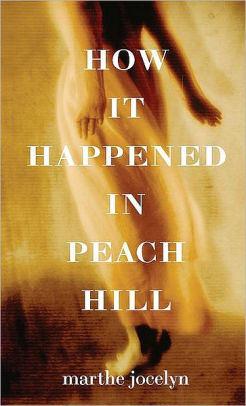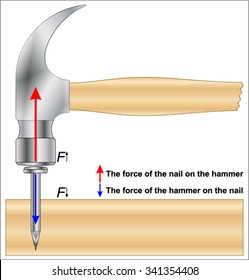Newtons Laws of Motion
Data: 3.09.2018 / Rating: 4.8 / Views: 777Gallery of Video:
Gallery of Images:
Newtons Laws of Motion
Newtons laws of motion describe the relationship between forces acting on a body and its motion due to these forces. Newton used universal gravitation, along with his laws of motion, to substantiate Kepler's laws of planetary motion. The ideas have been tested and verified so many times over the years, that scientists now call them Newton's Three Laws of Motion. First Law The first law says that an object at rest tends to stay at rest, and an object in motion tends to stay in motion, with the same direction and speed. Newton's Laws of Motion help us to understand how objects behave when they are standing still, when they are moving, and when forces act upon them. There are three laws of motion. Here is a description of Newton's Laws of Motion and a summary of what they mean. Newtons Laws of Motion with Real Life Examples 1. Newtons 1st Law The first law of motion sates that an object will not change its speed or direction unless an unbalanced force (a force which is distant from the reference point) affects it. Science of NFL Football: Newton's First Law Of Motion Science of NFL Football is a 10part video series funded by the National Science Foundation and produced in. Newton's first law of motion is also referred to as the law of inertia, where inertia is the resistance to change in motion. Newton's first law of motion applies to objects both on earth and in space. This is the meat of much of classical physics. We think about what a force is and how Newton changed the world's (and possibly your) view of how reality works. But what do his laws mea I'm sure you've heard of Isaac Newton and maybe of some of his laws. Like, that thing about equal and opposite reactions and such. Newton's First Law states that an object will remain at rest or in uniform motion in a straight line unless acted upon by an external force. It may be seen as a statement about inertia, that objects will remain in their state of motion unless a force acts to change the motion. Newton's laws of motion three fundamental laws of classical physics, established by the English mathematician and physicist Isaac Newton ( ). The first states that a body continues in a state of rest or uniform motion in a straight line unless it is acted on by an external force. Share; Inertia: Newtons First Law of Motion. Newtons First Law of Motion, also known as the Law of Inertia, states that an objects velocity will not change unless it is acted on by an outside force. This means that an object at rest will stay at rest until a force causes it to move. Essentially, these laws define the means by which motion changes, specifically the way in which those changes in motion are related to force and mass. Origins of Newton's Laws of Motion. Sir Isaac Newton ( ) was a British physicist who, in many respects. Background add to notesSir Isaac Newton ( ) an English scientist and mathematician famous for his discovery of the law of gravity also discovered the three laws of motion. three laws of mechanics describing the motion of a body. Expressed mathematically, F ma, where F is the force in Newtons, m is the mass of the body in kilograms, and a is the acceleration in meters per second per second. Newton's third law states that for every action there is an equal and opposite reaction. Newtons Laws of Motion Notes: Most of the material in this chapter is taken from Young and Freedman, Chapters 4 and 5 1. 1 Forces and Interactions It was Isaac Newton who first introduced the concepts of mass and force, to a large extent to make sense of the experimental results obtained by previous scientists. Newton's 3 Laws of Motion by Jessica Dolan 1. An object at rest will remain at rest unless acted on by an unbalanced force. An object in motion continues in motion with the same speed and in the same direction unless acted upon by an unbalanced force Newton's first law: An object at rest remains at rest, or if in motion, remains in motion at a constant velocity unless acted on by a net external force. Note the repeated use of the verb remains. We can think of this law as preserving the status quo of motion. In a previous chapter of study, the variety of ways by which motion can be described (words, graphs, diagrams, numbers, etc. In this unit (Newton's Laws of Motion), the ways in which motion can be explained will be discussed. Isaac Newton (a 17th century scientist) put forth a. Sir Isaac Newton first presented his three laws of motion in the Principia Mathematica Philosophiae Naturalis in 1686. His second law defines a force to be equal to the change in momentum with a change in time. Momentum is defined to be the mass m of an object times its velocity V. Let us assume that we have an airplane at a point 0 defined by its location X0 and time t0. Newtons Laws; Vectors and Projectiles; Momentum and Collisions; Work and Energy; Circular and Satellite Motion; Balance and Rotation; Electric Circuits; Static Electricity; Newton's Laws of Motion; Vectors and Projectiles; Forces in Two Dimensions; Momentum and Collisions; Work and Energy Packet; Circular Motion and Gravitation. The first law of motion which was given by Newton predicts that the force which is acting on anybody shows a balanced behavior. So, the first law of motion is known as the law of inertia. Newton's Laws of Motion Sir Isaac Newton was an English mathematician, astronomer and physicist who gave three laws which proved to be fundamental laws for describing the motion of a body. These are generally known as Newtons laws of motion. Whether they are sprinting down the ice, smashing into the boards or stopping on a dime, NHL players display an amazing mix of speed and strength. These athletic moves also provide great examples of Newton's Three Laws of Motion. Newton's First Law of Motion is the Law of Inertia, and the Second Law of Motion expresses the relationship between force, mass and acceleration. The Third Law of Motion states that for every action, there is an equal and opposite reaction. Newton's First Law of Motion, or the Law of Inertia. Newton's laws of motion formalize the description of the motion of massive bodies and how they interact. Newtons Laws of Motion Newton's laws of motion formalize the description of the motion. Newton's Laws of Motion Illustrated with 3D Animations and Motion Graphics. This video illustrates Isaac Newton's three laws of motion. The music is original as are the 3D animations and motion graphics. (04: 24) Found by csherell in Newton's Laws of Motion. Newton's laws of motion are three physical laws that form the basis for classical mechanics. They have been expressed in several different ways over nearly three centuries, and can be summarised as follows: In the absence of a net force, the center of mass of a body either is at rest or moves at Newton's Three Laws of Motion Let us begin our explanation of how Newton changed our understanding of the Universe by enumerating his Three Laws of Motion. Newton's First Law of Motion: I. Every object in a state of uniform motion tends to remain in that state of motion unless an external force is. physics 111N 2 forces (examples) a push is a force a pull is a force gravity exerts a force (measured in Newtons, N) and direction e. physics 111N 5 pulling a fridge resultant force two guys are moving a fridge by pulling on ropes attached to it NEWTONS LAWS OF MOTION A force is a push or pull ( vector quantity). Units of force of Newtons (N) or kgms 2. An external force is an applied force, such as kicking a ball. The laws are shown above, and the application of these laws to aerodynamics are given on separate slides. Newton's first law states that every object will remain at rest or in uniform motion in a straight line unless compelled to change its state by the action of an external force. Start studying Newton's Laws of Motion Examples. Learn vocabulary, terms, and more with flashcards, games, and other study tools. Newton's laws of motion help us make a lot of sense of the world. The fact that a body will continue to be in its state of motion if there is no force or hindrance to it is a unique observation Newton made. An object in motion continues in motion with the same speed and in the same direction unless acted upon by an unbalanced force. This law is often called the law of inertia. Laws of Motion Newton's laws of motion are three physical laws that directly relate the forces acting on a body to the motion of the body. The first law states that every object in a state of uniform motion tends to remain in that state of motion unless an external force is applied to it. Learn about Newton's three laws that describe the properties of motion with this Science Channel interactive. Newtons three laws of motion: The rst law: Unless acted upon by an outside force, a body at rest A. The tendency of a stationary object to resist being put into motion is known as page10 Newtons Laws of Motion Packet. An object is moving in a straight line at a constant. Isaac Newton ( ) was a scientist who discovered three laws of motion. The first law, known as the Law of Inertia, states that an object at rest stays at rest and an object in uniform motion stays in uniform motion unless acted upon by an external force. Isaac Newton ( ), the father of the study of dynamics the study of motion developed three laws that are the foundation of classical mechanics. They are believed to be true because the results of tests done by scientists agree with the laws he produced. Objects in motion tend to stay in motion. This is the simplest of Newton's laws, and is usually referred to as inertia. Inertia means that once an object starts in a certain direction, it requires an equal or greater force to stop it from moving. In physics, motion is described through two sets of apparently contradictory laws of mechanics. Motions of all largescale and familiar objects in the universe (such as projectiles, planets, cells, and humans ) are described by classical mechanics. The three laws proposed by Sir Isaac Newton to define the concept of force and describe motion, used as the basis of classical mechanics. The first law states that a body at rest tends to stay at rest, and a body in motion tends to stay in motion at a constant speed in a straight line, unless acted. Isaac Newton's laws of motion were first set down in his Principia Mathematica Philosophiae Naturalis in 1687. The first law states that an object will stay at rest or move with a constant. Newtons laws of motion, relations between the forces acting on a body and the motion of the body, first formulated by English physicist and mathematician Sir Isaac Newton. Read More on This Topic Understanding Newtons Laws of Motion A brief video for children explaining Newton's laws of motion in an easy fun way. The first law states that 'Things want to keep on doing what they are already doing. A Brief History of Newton's Laws Newton's laws capitalized on the work of other great thinkers before him, such as Rene Descartes. Find out what Newton's laws owe to Descartes.
Related Images:
- Bycicle blue book
- Concert in the park
- La seconde guerre mondiale
- Counting numbers worksheets 1 100
- Inglourious basterds inglorious bastards 2018
- The million dollar critic
- The Sims Medieval Update v2 0 113 Cracked
- For basic electrical machines by del toro and vincent
- Breaking bad season 5 480p brrip
- Avengers earths s01
- Kun fu panda wii
- 1080p gta v
- Mortimer beckett and the lost king for free
- Laws of illusion
- Fundamentals Of Mutual Fund Accounting Pdf
- Harry potter deathly hallows part
- The liquid amber ep
- Norton 2018 trial reset
- Sexy hot brazil
- Fascinate Revised Updated Impossible Resist
- Les Pommes Seront Fameuses Cette Annee
- Legend of zelda soundtrack
- Lady Gaga For Piano Solo By Lady Gaga
- Honda Gear Shift Cable Replacement
- Program Weight Watchers 10 Recipes
- Prolexis 6 serial
- The mindy project 210
- The creature of kapu cave
- Think of one
- Fist of legend 1080p
- Mono sequencer download free
- Vsphere 6 Enterprise Plus Keygen
- David bowie lossless
- The Deuce S1E3
- Tenorshare iPhone Data Recovery
- The most women
- Digital tutors drawing life
- Face2face elementary audio cd torrent
- Quick books pro
- India arie voyage to india
- Dvd
- Coded contagion psp
- Predator 2 italian
- The 3 muskateers
- Guide To Good Food Chapter 19 Worksheet Answers
- Essential Chemistry Study Guide Answers
- Last man standing us s02e13
- The Unwritten Rules Of Phd Research Gordon Rugg
- The vampire diaries season 1 and 2
- Once upon a time s03 sub
- Un mundo maravilloso
- Dual audio 480p movies
- Attack on titan 19
- Quo Vadis
- Unity Asset SciFi Effects
- Smallville s 01
- Dog behavior training
- China gate video
- Mediatek drivers usb vcom auto
- Kirk franklin discography
- Analytical Grammar Patterns 1 And 2 Exercise 1 Answers
- Foxy di illusion
- Name nobody subs
- Dvd marc dorcel
- Ccna 3 packet tracer answers full
- Fall to piece
- 2018 720 brrip dual audio
- Good guys s01e01
- Suck suck pass
- TJR DANCES WITH WHITE GIRLS
- Planes Avioane
- The Theory of Interest
- Cushcraft R5 Vertical Antenna Manual
- Toshiba europe gmbh drivers audio gratis
- IPHONE 4 IPA
- Adultery paulo coelho
- American horror history
- Seirei tsukai no blade dance
- Rich homie quan still












